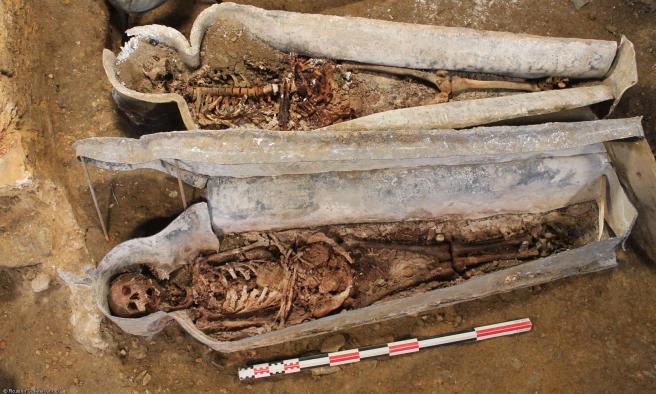
Analyses of graves in the Jacobin convent in Rennes (western France) have revealed previously unknown burial practices, challenging earlier interpretations about the history of death and belief in Europe.
Constructed in 1369, the convent became a principal burial site for the aristocracy of Rennes, the seat of Brittany’s parliament. Excavations there by the Institut national de recherches archéologie preventive (Inrap), under the direction of Drac Bretagne, unearthed approximately 900 graves dating to between the 14th and 18th centuries.
These burials included five heart-shaped lead urns, each containing an aborted human heart, as well as five lead coffins. Many of the urns bear identifying inscriptions and contain embalmed and treated hearts. One unique example contained the heart of a man who died in 1649 and was buried 200km from Rennes. His heart was found atop the grave of his wife, a benefactor of the convent, who died seven years later and also had her heart removed.
Noting variations in the use of embalmment, heart removal, and other rites, Inrap’s research has identified long-lasting links between the religious attitudes, social statuses, and interment processes of individuals at the convent, for the first time suggesting that the evolution of European funeral practices from the Middle Ages through the modern era was not simply a process of gradual secularization.

Images: Rozenn Colleter, Inrap
Text: Nicholas Bartos




